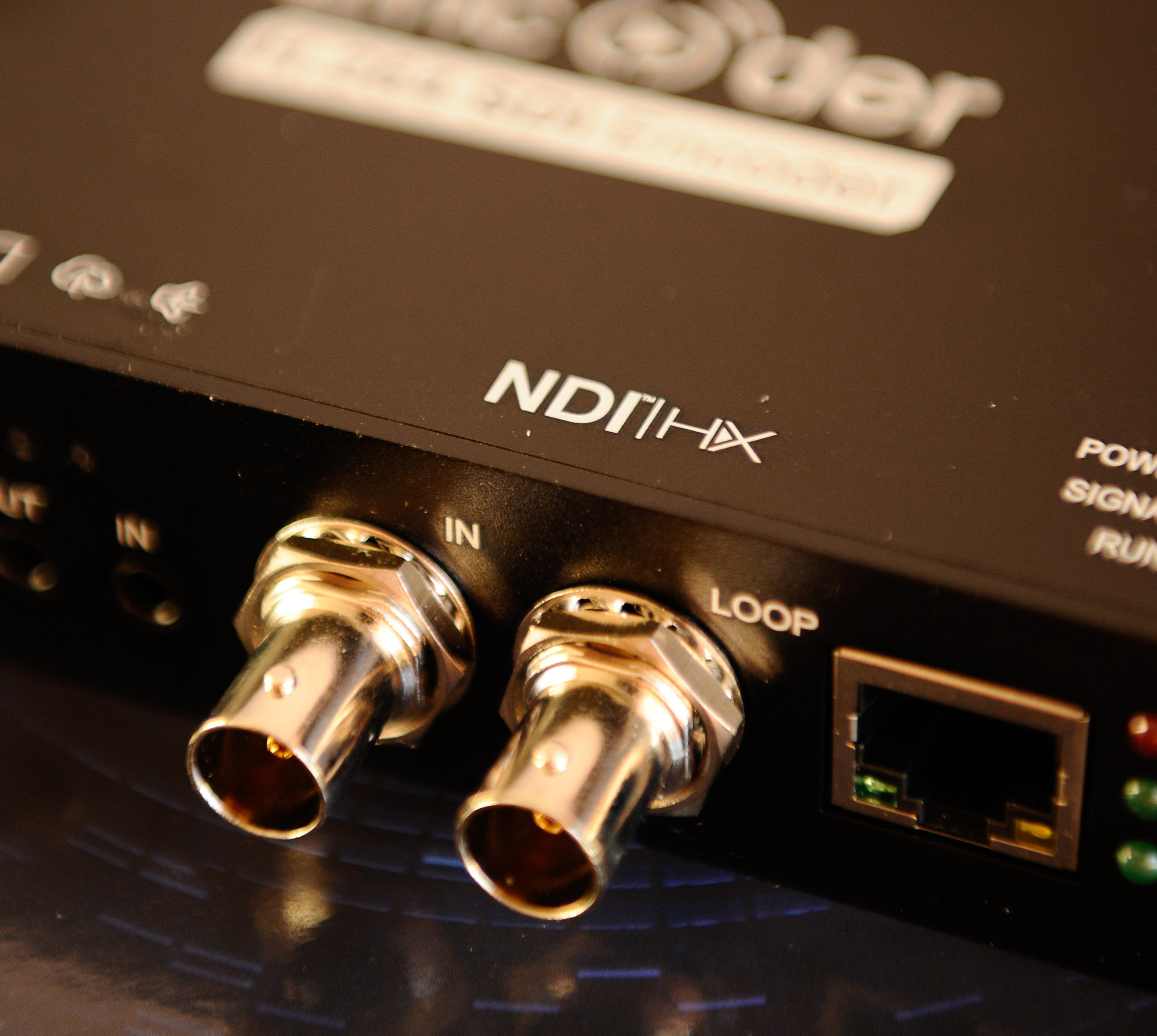Life After Co-Axial: SMPTE or NDI?
Neither NDI or SMPTE IP is “optimum,” and thus the right choice is much harder to select.

Looking to a life after co-ax connected video signals has many wondering which path to take—SMPTE or NDI? How can it be we’re at a fork in the road for IP video production?
The simple fact is this: for decades, the evolution of digital video production was a fairly standard and uncompetitive process. The Society of Motion Picture and Television Engineers (SMPTE) took the lead and developed standards which the industry has relied upon for many years. With each evolution new higher resolution formats were supported but continued to use co-axial cable with BNC connectors. If you needed to throw a particularly long distance, then a baseband fibre alternative was also an option.
So why are we at a juncture where system architects are left making a judgment call when developing new production facilities? The answer is simple: Neither NDI or SMPTE IP is “optimum,” and thus the right choice is much harder to select.
An Evolution
The first important IP format, SMPTE ST 2022, appeared in the last decade and was basically SDI packetized into an IP stream. Though not hugely flexible, it did—and still does, have uses. Then came SMPTE ST 2110; it provided greater capability by separating video, audio and metadata into individual IP streams, allowing designers to create facilities with simplified workflows and significantly less hardware. There are other advantages, too many to mention, but a critical one opened the door to remote production with cameras and production galleries located in different countries with a helpful telco in between; global televised sport never looked back.
The latter part of the last decade saw manufacturers, including ourselves, natively supporting SMPTE ST 2110. The choice was simple, the future was bright… wasn’t it? The reality is that SMPTE ST 2110 demands very high-speed IP infrastructure with cost to match. Away from the highly organized environments of studios and outside broadcast, SMPTE ST 2110’s fibre transport can show its fragility making decision makers nervous. Remember it took years to get location drama to stop using film!
This backdrop has been to the advantage of NDI, emanating from NewTek and now a commercial tech spin-off owned by Vizrt. Its mantra could be summed up as “keeping it copper—IP video should be transported over cheaper Cat5/Cat6 networks.” Here the cables are robust and familiar, and the networking infrastructure doesn’t require $40K of training to manage.
There is, however, a big “however" the video is compressed. Purists in broadcast engineering dismissed this with a sniff and sharp turn of the head, so NDI sat in the dark longer than it should have. Nearly all routes to the consumer result in video being compressed so why should compression matter further up the workflow? Well, it probably doesn’t, thus we are seeing growing numbers of manufacturers supporting NDI. One of the “cons” of NDI was its limited acceptance but this is becoming historical.
Nearly all routes to the consumer result in video being compressed so why should compression matter further up the workflow?"
The compression itself can be confusing as the NDI brand has multiple types. NDI, often referred to as “Full NDI” is based on something known as SpeedHQ supporting variations SHQ2 and SHQ7 (both 4:2:2 video types), resulting in HD bitrates around the 100Mb/s. NDI’s other version HX is H264/H265 depending on whether it is HD or 4K (UHD). NDI-HX is a much lower bit rate and may rule itself out for more “premium” production environments wishing to avoid the cost of SMPTE ST 2110, but the non-HX NDI is pretty damn good, when you consider it wasn’t long ago the audience was “enjoying” interlaced Standard Definition.
More Complex Than It Looks
Those “purists” I mentioned will protest that I’ve oversimplified the issue and have clearly overlooked important factors such as compression latency. They’d be right of course; but the true picture is much more complex. Film, CGI and drama workflows are still going to demand minimal if not zero compression and I strongly suspect that in location production, baseband 12Gb/s SDI will have a long life to come.
Eventually we will all implement IP and the hardware will only ever be present at the “edge” with all processing, distribution and storage being firmly in the cloud. Which format will win is of course difficult to predict. If the discovery model (how you identify and find multimedia IP devices) for SMPTE ST 2110 and its eventual successor matures, then an uncompressed video, standardized by SMPTE, may take the lead.
For NDI, taking its place in the competitive market might come down to the commercial approach. Having spent some time talking with senior figures in the NDI team—past and present, I believe it’ll be the fee manufacturers must pay to wear the NDI logo that will dictate the take-up.
We are likely to see a battle over the next five years and the resulting uncertainty will make choices difficult. I won’t make a prediction, but I will say that having previously introduced support for SMPTE ST 2110 in our video technology, we are currently putting the final touches to our NDI support ahead of this year’s IBC.
Get the TV Tech Newsletter
The professional video industry's #1 source for news, trends and product and tech information. Sign up below.
Dr Bill Garrett is Chief Technology Officer and lead design engineer at outsource design and innovation company BHV. He is also a solution architect and has served in senior roles for broadcasters in the U.K. and Australia.

